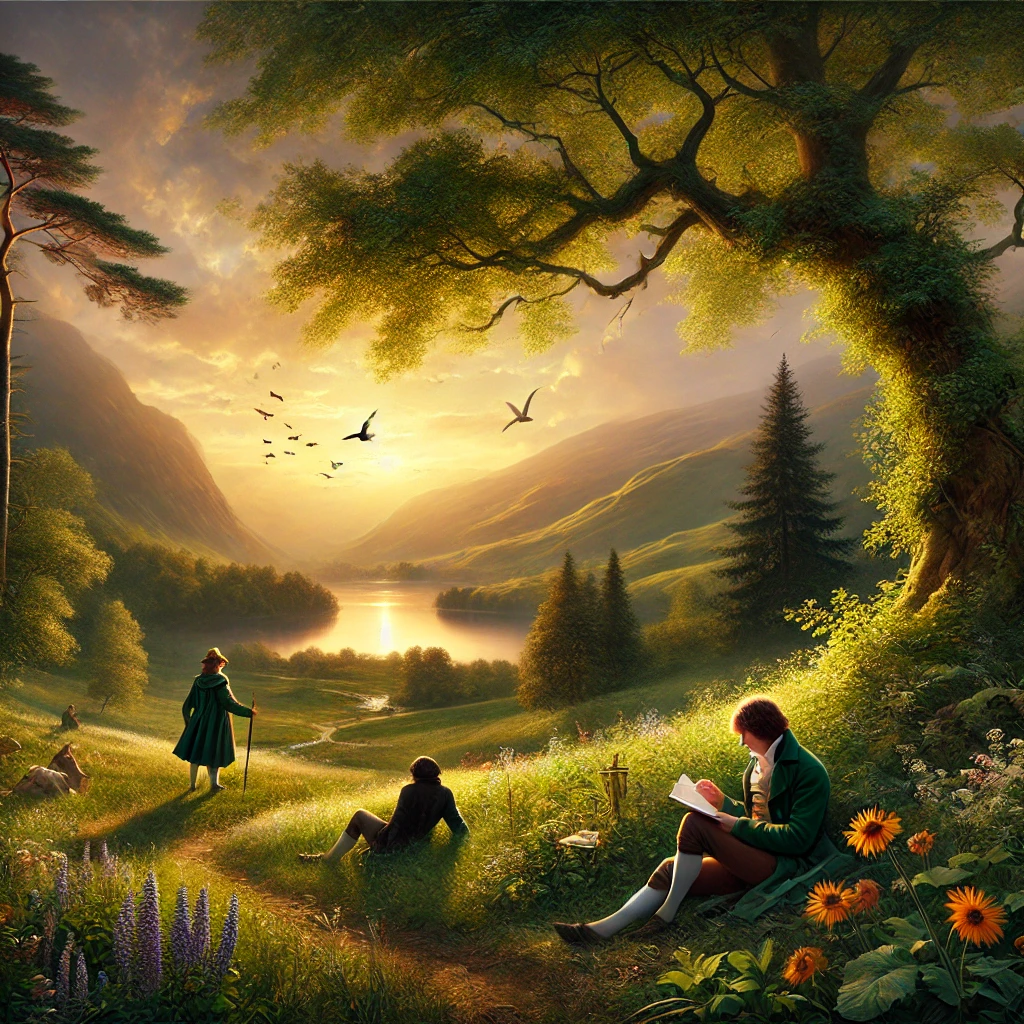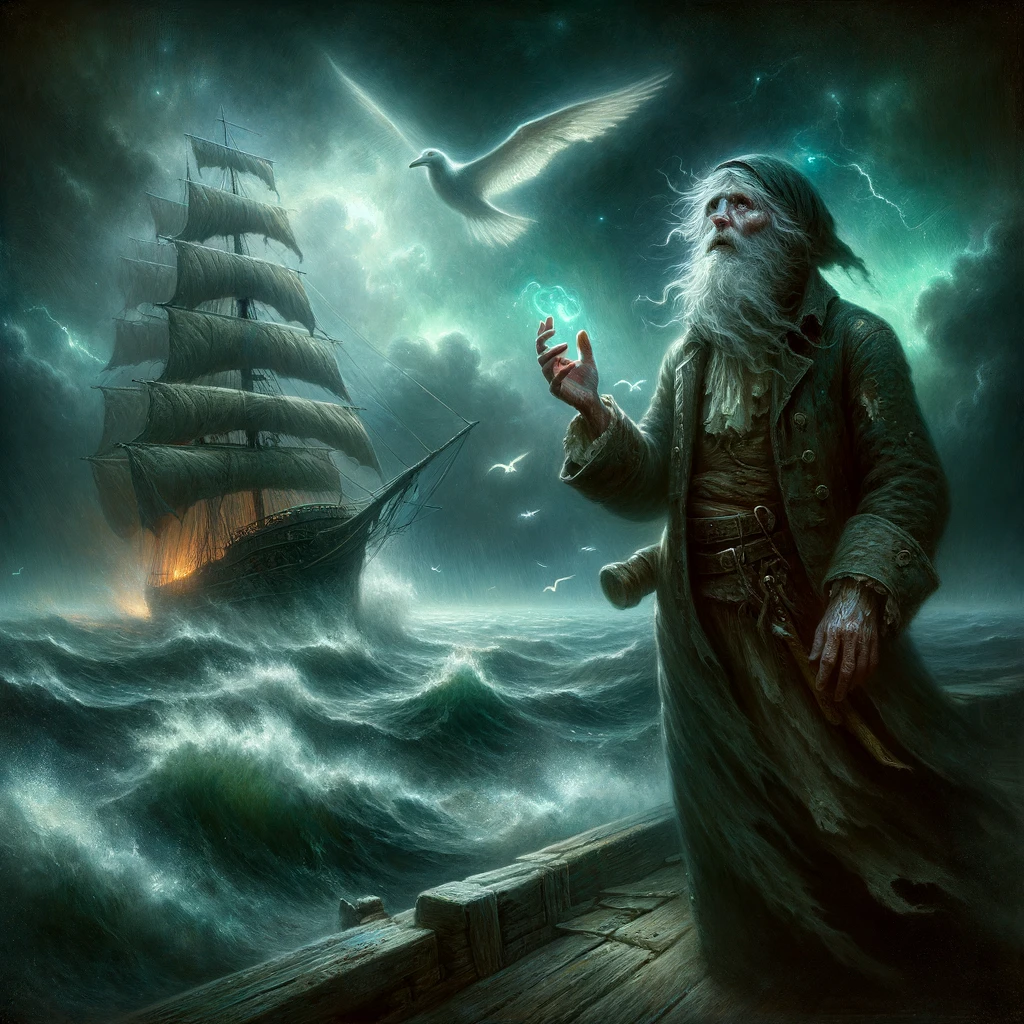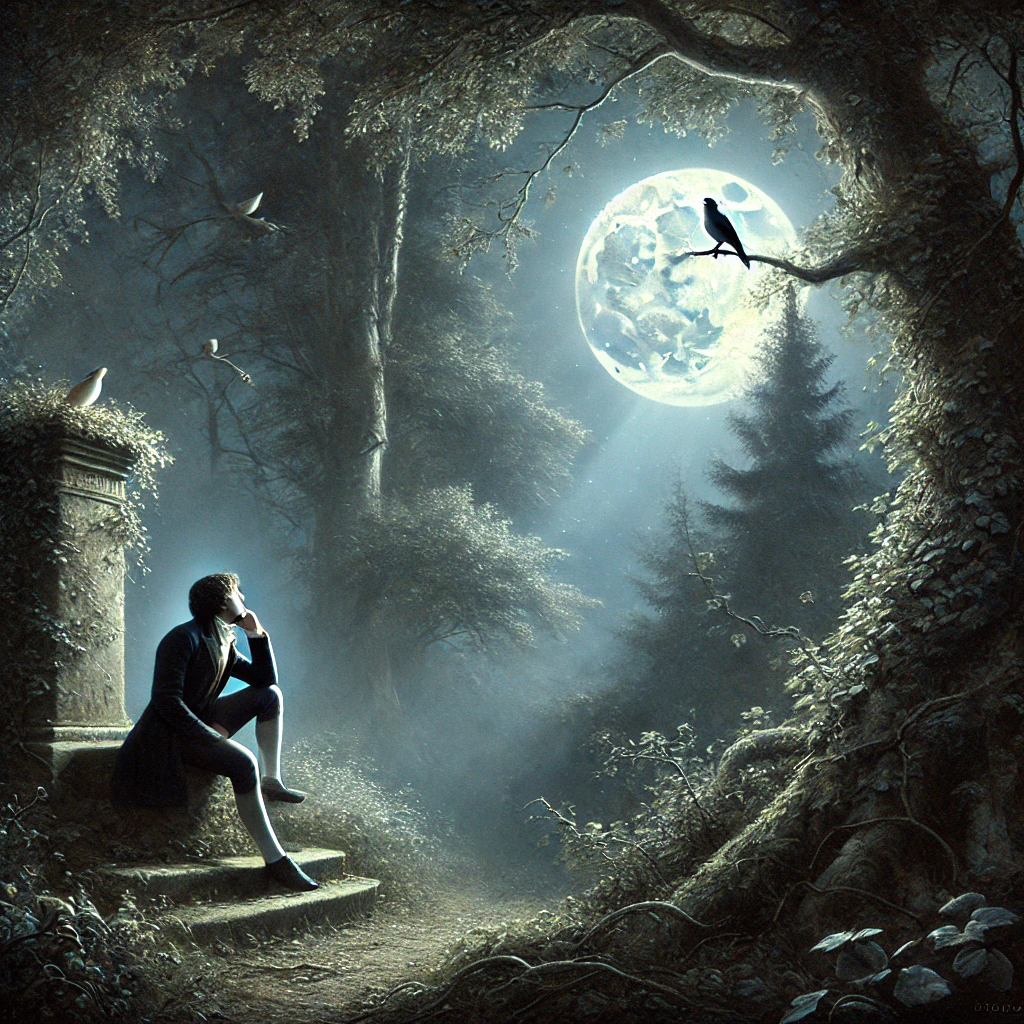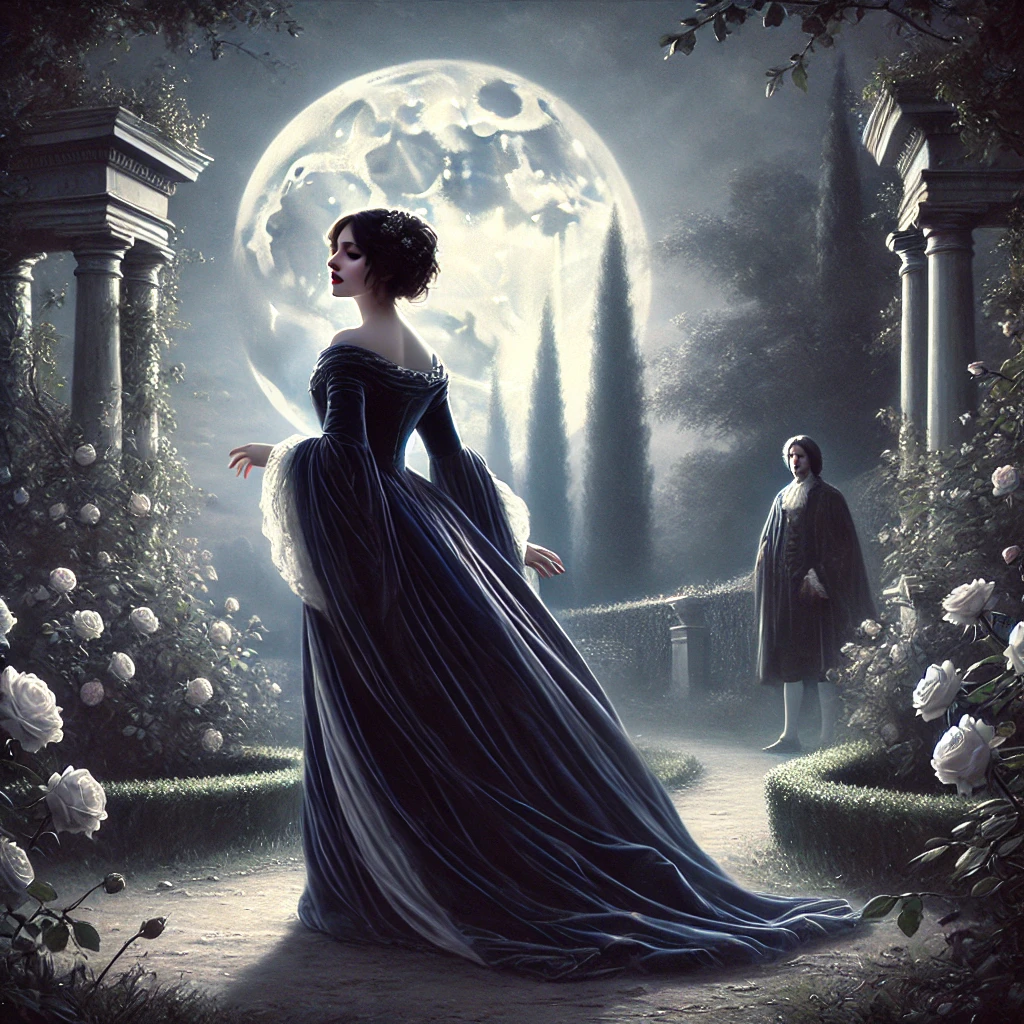By ABS, The Literary Scholar
A.K.A. The One Who Followed a Skylark Into a Metaphor and Didn’t Come Back
When Poetry Left the Drawing Room and Frolicked Into the Fields
The Neoclassical Age was all about sharp minds and sharper tongues.
But around the end of the 18th century, poetry looked in the mirror and said:
“Maybe I want to feel things again.”
Cue the Romantics, sweeping in like a thunderstorm over the Lake District.
Gone were the powdered wigs, the heroic couplets, and the polite emotional repression.
In came the nightingales, the west winds, the broken hearts, the wandering clouds, and more introspective walks than a therapy retreat.
But this wasn’t just aesthetic.
This was rebellion—against reason, against rules, against rhyming for rhyme’s sake.
And like all good rebellions, it started with a pamphlet no one saw coming…
1798: When Two Men Took a Nature Walk and Changed Poetry Forever
Wordsworth and Coleridge—two literary gentlemen with pens, thoughts, and very intense feelings—decided that poetry needed a makeover.
They published Lyrical Ballads (1798), and the world collectively went,
“Wait, we can write like this now?”
Wordsworth contributed simple, heartfelt pieces like:
We Are Seven – where a child explains death better than most philosophers
Michael – the first wholesome sad story set entirely on a hill
Lines Composed a Few Miles Above Tintern Abbey – the poetic equivalent of a meditative sigh
The Solitary Reaper and of course, the endlessly recitable:
“I wandered lonely as a cloud…”
This wasn’t just poetry.
This was therapy before therapy was invented.
Meanwhile, Coleridge showed up with The Rime of the Ancient Mariner—a tale involving:
A cursed sea voyage
Ghostly ships
Water, water everywhere
And a dead albatross that still haunts literature students
“Alone, alone, all, all alone,
Alone on a wide, wide sea…”
Poetic trauma? Delivered.
The Lake Poets: Where Nature Met Notebooks
After Lyrical Ballads, the poetic dam burst open, and the hills were suddenly alive with the sound of existential dread and daffodils.
This is where the Lake Poets—Wordsworth, Coleridge, and Robert Southey—settled like dramatic ducks near England’s mistiest bodies of water.
While Wordsworth wrote about:
The sanctity of nature
Children who understood life better than adults
And “emotion recollected in tranquillity”
Coleridge dove headfirst into:
Gothic supernaturalism
Myth
And opium-fuelled hallucinations
Aside from the Ancient Mariner, he gifted us:
Kubla Khan (a poem that sounds like a fever dream from a medieval music festival)
Christabel (witchcraft, mystery, and possibly the first literary soft-launch of bisexual energy)
And then there was Southey, the lesser-known third wheel, who:
Wrote a lot
Became Poet Laureate
Got slightly roasted by Byron
But still managed to publish epic poems like Thalaba the Destroyer (yes, that’s a real title)
Together, they created poetry that was:
Romantic
Reflective
Occasionally high
And absolutely in love with trees, rivers, clouds, and feelings
The Junior Romantics: When Emotion Turned Operatic
If the senior Romantics whispered into the wind, the junior Romantics yelled at it—beautifully.
Let’s begin with the most dramatic of them all…
Lord Byron: Poetry’s First Bad Boy
George Gordon, Lord Byron, stormed into the literary scene like a handsome hurricane in lace.
He was:
Gorgeous
Tortured
Scandalous
And possessed of the kind of cheekbones that could launch a revolution
He gave us:
She Walks in Beauty – the original slow-motion entrance in poem form
Childe Harold’s Pilgrimage – the saga of a bored, handsome man wandering the world and judging it poetically
Don Juan – a satiric epic so massive it could replace the gym
Byron basically invented the Byronic Hero—moody, brilliant, emotionally unavailable, but undeniably hot.
He was like a walking Tumblr account, centuries before Tumblr existed.
Percy Bysshe Shelley: Revolutionary with a Feathered Quill
Shelley didn’t write poems. He launched philosophical grenades in verse.
He:
Got expelled from Oxford for writing The Necessity of Atheism
Married Mary Shelley (yes, Frankenstein’s mom)
Believed poetry could change the world
Died young in a boat, because of course he did
His poetic resume includes:
Ozymandias – the most beautifully smug poem about hubris in history
“Look on my Works, ye Mighty, and despair!”
Spoiler: all that remained was sand. Brutal. Iconic.
Ode to the West Wind – where he asked the wind to scatter his thoughts like dead leaves.
Deep. Windy. Beautiful.
To a Skylark – a joyful, bird-based existential crisis
Shelley was idealistic, intense, and basically Romanticism’s spiritual manifesto in human form.
John Keats: The Gentle Genius with the Tragic Exit
Keats came late to the party but left poetry that still punches you in the soul with a velvet glove.
He believed in “truth is beauty, beauty truth”, and no, we’re still not done unpacking it.
He wrote:
Ode to a Nightingale – a soft descent into death with birdsong as the soundtrack
Ode on a Grecian Urn – a poem about art, time, and eternity (and an urn that’s somehow sexier than it should be)
Ode to Autumn – basically the pumpkin-spiced poem of English literature
“Season of mists and mellow fruitfulness…”
Like… why is that line so cozy?
He also wrote La Belle Dame sans Merci, which proves even the nicest poets can write femme fatales with killer cheekbones.
And tragically, Keats died at 25, whispering,
“My name is writ in water.”
Ironically? Today, his name is carved into every literature student’s syllabus with a highlighter of grief.
The Other Dreamers: They Wrote, Too (But You Probably Had to Google Them)
Though Byron, Shelley, and Keats stole most of the spotlight (and the angst), the Romantic movement had a constellation of softer stars glimmering in the poetic galaxy.
Let’s name-drop responsibly:
Charlotte Smith – The Unsung Starter
Long before Wordsworth wandered lonely as a cloud, Charlotte Smith was writing sonnets about:
Nature
Melancholy
Women’s suffering
And a few well-placed existential sighs
She helped revive the sonnet form in English. But history, being predictably unromantic to women, gave her less applause.
Felicia Hemans – Elegance Meets Emotion
Hemans was a bestselling poet in her day (yes, that’s a thing), whose works like Casabianca (“The boy stood on the burning deck…”) became classroom classics.
She brought grace, grief, and maternal wisdom into Romanticism.
And she did it while outpublishing many of the boys.
Leigh Hunt – The Connector
Hunt was like the cool indie publisher friend who knew everybody:
He mentored Keats
Boosted Shelley
Was pals with Byron
Wrote lush, lyrical verse
And spent time in prison for calling the Prince Regent fat (we love him)
His poems were sunshiney and scented—a romantic garden party in verse.
The Essayists: Where Feelings Met Footnotes
While the poets were chasing skylarks and philosophizing about urns, the essayists said:
“Lovely. Now let’s talk about why that matters.”
Enter:
William Hazlitt – fierce critic, eloquent essayist, professional literary hot take machine
Charles Lamb – gentle, nostalgic, slightly odd, and very quotable
Lamb’s Essays of Elia read like cozy fireside chats with a man who’d just spent the afternoon befriending a squirrel and reminiscing about school trauma.
Both gave Romanticism its thoughtful backbone, gently reminding poets that readers exist.
The Romantic Mood: Aesthetic Overload (But In a Good Way)
Romantic poetry was not just “I love nature”. It was:
I AM nature
This daffodil understands me
Time is fleeting, but I’m going to write 28 lines about it anyway
It was rich, overflowing, and occasionally melodramatic.
They talked about:
Melancholy as a companion
Solitude as sacred
Death as poetic
Dreams as semi-factual
And clouds as relatable content
And we read it all, wide-eyed, slightly swooning, definitely underlining lines in pencil like:
“Thou still unravish’d bride of quietness…”
(Umm, excuse me?)
“A thing of beauty is a joy forever…”
(Still true, honestly.)
Final Thoughts: The Age of Feeling Left the Door Ajar
The Romantics changed poetry not just with form, but with sincerity.
They said:
It’s okay to feel
It’s okay to dream
It’s okay to be heartbroken, overwhelmed, amazed by a skylark
And it’s okay if your poetry is just a really intense description of a river
They didn’t perfect poetry.
But they opened it up—to emotion, imagination, introspection, and you.
Final Scroll:
ABS closes the scroll with a wistful sigh, watching a cloud drift over a hilltop—and wonders, just briefly, if perhaps it too is secretly composing a sonnet.
They wrote in whispers, cried in verse, and made the world feel again—with every daffodil, urn, and ode.
Signed,
ABS, The Literary Scholar
Share this post / Spread the witty word / Let the echo wander / Bookmark the brilliance





